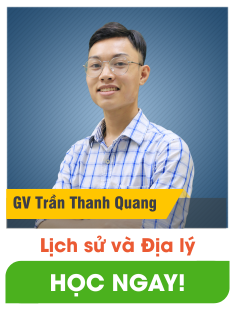The iBrain: Winner of the Most Innovative New Product Award. The iBrain device was developed by Dr
The iBrain: Winner of the Most Innovative New Product Award.
The iBrain device was developed by Dr Philip Low, of Standford University, who took out a personal loan to fund it. It is a tool that records brain activity. It is easy to use, comfortable, portable, and allows for more efficient data collection. The iBrain is a tiny electronics box attached to an elastic headband, with electrodes that can easily be applied to the head. It has a rechargeable long-life battery. The date and time are automatically recorded, and its data is easily transferred via the internet.
Monitoring and Diagnosis
The iBrain can provide easy-to-use, accurate, at-home monitoring. The data it collects can be used to help understand a number of medical problems and to monitor a patient’s brain.
Section B.
Q&A.COM
TOPIC: Science and Technology
Question: What is your opinion of the iBrain?
Most recent answer: Submitted by Sciencefreak.
The iBrain is an amazing development! If this device achieves its purpose, it will be great for Dr Hawking, and many others like him whose medical problems prevent them from communicating normally. It is always a pleasure to see people pursuing their passion. My congratulations must go to Dr Low for refusing to accept capital from commercial businesses. Science must be used to help society or there will be no society. I hope medicine and helping human beings will always be Dr Low’s first priority.
Section C.
iBrain: The Technological Alteration of the Modern Mind
by Gary Small and Gigi Vorgan
Small and Vorgan’s ‘iBrain’ is a fascinating book that describes how new technologies are changing our brains. Their main point is that our brains and the brains of our children are much easier to shape than we have been led to believe. They differentiate between digital immigrants: people who had to learn technology such aas computers and cell phones as adults, and digital natives: people who have known technology all their lives. The good news for digital immigrants is that they find it easier to form relationships, communicate with others and adapt to the demands of modern society. In other words, they retain the social skills that digital natives sometimes don’t develop.
The message of ‘iBrain’ is not that technology is good or bad, but that it is both. Electronic devices can change the structure of our brains and leave us disconnected and lonely, but they can also help us accomplish much in terms of work, economics and social connection.
Section D.
The Washington Post: Stephen Hawking to Demonstrate iBrain Technology next month
By Emi Kolawole
Scientists may have discovered a way to read the brain of one of the world’s most famous scientists. Stephen Hawking, a theoretical physicist, who was diagnosed with a serious muscular disease, lost the ability to speak 30 years ago. Up to now, a computerized voice generated by a sensor inside Hawking’s mouth has allowed him to communicate. However, the muscles controlling the device have weakened , limiting his speech to as little as one word per minute.
Without a new means of communication, Hawking runs the risk of total isolation. This is a horrifying prospect not only for Hawking himself, but also for the scientific community, who have benefitted greatly from his work.
Now, a new device called the iBrain may significantly improve Hawking’s ability to communicate. Developed by Stanford University professor, Philip Low, the device can record brain function at a level of detail never achieved before. The two scientists, Hawking and Low, have been working on the device for over a year, and plan to demonstrate it in Hawking’s hometown of Cambridge, England, next month.
Trả lời cho các câu 1, 2, 3, 4, 5, 6, 7, 8, 9, 10 dưới đây:
Đáp án đúng là: A
Kiến thức: đọc hiểu
Đáp án cần chọn là: A
Đáp án đúng là: A
Kiến thức: đọc hiểu
Đáp án cần chọn là: A
Đáp án đúng là: B
Kiến thức: đọc hiểu
Đáp án cần chọn là: B
Đáp án đúng là: D
Kiến thức: đọc hiểu
Đáp án cần chọn là: D
Đáp án đúng là: C
Kiến thức: đọc hiểu
Đáp án cần chọn là: C
Đáp án đúng là: D
Kiến thức: đọc hiểu
Đáp án cần chọn là: D
Đáp án đúng là: A
Kiến thức: đọc hiểu
Đáp án cần chọn là: A
Đáp án đúng là: B
Kiến thức: đọc hiểu
Đáp án cần chọn là: B
Đáp án đúng là: D
Kiến thức: đọc hiểu
Đáp án cần chọn là: D
Đáp án đúng là: D
Kiến thức: đọc hiểu
Dịch bài đọc:
Phần A.
IBrain: Chiến thắng giải thưởng sản phẩm mới sáng tạo nhất.
Thiết bị iBrain được phát triển bởi Tiến sĩ Philip Low, của Đại học Standford, người đã vay tiền cá nhân để tài trợ cho nó. Nó là một công cụ ghi lại hoạt động của não. Nó rất dễ sử dụng, thoải mái, di động và cho phép thu thập dữ liệu hiệu quả hơn. Các iBrain là một hộp điện tử nhỏ gắn liền với một headband đàn hồi, với các điện cực có thể dễ dàng được áp dụng cho người đứng đầu. Nó có pin sạc dài. Ngày và giờ được ghi tự động và dữ liệu của nó có thể dễ dàng được chuyển qua internet.
Theo dõi và chẩn đoán
IBrain có thể cung cấp sự giám sát dễ sử dụng, chính xác, tại nhà. Dữ liệu thu thập được có thể được sử dụng để giúp hiểu một số vấn đề y tế và theo dõi não của bệnh nhân.
Phần B.
Q & A.COM
CHỦ ĐỀ: Khoa học và Công nghệ
Câu hỏi: Ý kiến của bạn về iBrain là gì?
Câu trả lời gần đây nhất: Được gửi bởi Sciencefreak.
IBrain là một sự phát triển tuyệt vời! Nếu thiết bị này đạt được mục đích của nó, nó sẽ là tuyệt vời cho giáo sư Hawking, và nhiều người khác như ông có vấn đề về bệnh ngăn cản họ giao tiếp bình thường. Nó luôn luôn là một niềm vui để xem những người theo đuổi niềm đam mê của họ. Lời chúc mừng của tôi phải tới giáo sư Low vì từ chối chấp nhận vốn từ các doanh nghiệp thương mại. Khoa học phải được sử dụng để giúp xã hội hoặc sẽ không có xã hội. Tôi hy vọng y học và giúp đỡ con người sẽ luôn là ưu tiên hàng đầu của giáo sư Low.
Phần C.
iBrain: Sự thay đổi công nghệ của tâm trí hiện đại
bởi Gary Small và Gigi Vorgan
"IBrain" của Small và Vorgan là một cuốn sách hấp dẫn mô tả cách công nghệ mới đang thay đổi bộ não của chúng ta. Điểm chính của họ là bộ não của chúng ta và bộ não của con cái chúng ta dễ hình thành hơn chúng ta đã được dẫn dắt để tin tưởng. Họ phân biệt giữa những người nhập cư kỹ thuật số: những người phải học về công nghệ máy tính và điện thoại di động như người lớn và người bản địa kỹ thuật số: những người đã biết công nghệ suốt cuộc đời của họ. Tin tốt cho những người nhập cư kỹ thuật số là họ cảm thấy dễ dàng hơn trong việc hình thành các mối quan hệ, giao tiếp với người khác và thích ứng với nhu cầu của xã hội hiện đại. Nói cách khác, họ giữ lại các kỹ năng xã hội mà người bản xứ kỹ thuật số đôi khi không phát triển.
Thông điệp của ‘iBrain’ không phải là công nghệ tốt hay xấu, nhưng đó là cả hai. Các thiết bị điện tử có thể thay đổi cấu trúc bộ não của chúng ta và khiến chúng ta bị ngắt kết nối và cô đơn, nhưng chúng cũng có thể giúp chúng ta đạt được nhiều điều về công việc, kinh tế và kết nối xã hội.
Phần D.
The Washington Post: Stephen Hawking trình diễn công nghệ iBrain vào tháng tới
Bởi Emi Kolawole
Các nhà khoa học có thể đã phát hiện ra một cách để đọc bộ não của một trong những nhà khoa học nổi tiếng nhất thế giới. Stephen Hawking, một nhà vật lý lý thuyết, người được chẩn đoán mắc bệnh cơ bắp nghiêm trọng, mất khả năng nói 30 năm trước. Cho đến giờ, một giọng nói được máy vi tính tạo ra bởi một cảm biến bên trong miệng Hawking đã cho phép ông giao tiếp. Tuy nhiên, các cơ kiểm soát thiết bị đã bị suy yếu, hạn chế lời nói của ông chỉ với một từ mỗi phút.
Không có phương tiện giao tiếp mới, Hawking có nguy cơ bị cô lập hoàn toàn. Đây là một viễn cảnh khủng khiếp không chỉ đối với Hawking, mà còn cho cộng đồng khoa học, những người đã được hưởng lợi rất nhiều từ công việc của mình.
Bây giờ, một thiết bị mới được gọi là iBrain có thể cải thiện đáng kể khả năng giao tiếp của Hawking. Được phát triển bởi giáo sư Đại học Stanford, Philip Low, thiết bị có thể ghi lại chức năng não ở mức độ chi tiết chưa từng đạt được trước đây. Hai nhà khoa học, Hawking và Low, đã làm việc trên thiết bị này trong hơn một năm, và dự định trình diễn nó tại quê hương của Hawking ở Cambridge, Anh, vào tháng tới.
Đáp án cần chọn là: D
Quảng cáo
>> Học trực tuyến lớp 9 và Lộ trình UP10 trên Tuyensinh247.com Đầy đủ khoá học các bộ sách: Kết nối tri thức với cuộc sống; Chân trời sáng tạo; Cánh diều. Lộ trình học tập 3 giai đoạn: Học nền tảng lớp 9, Ôn thi vào lớp 10, Luyện Đề. Bứt phá điểm lớp 9, thi vào lớp 10 kết quả cao. Hoàn trả học phí nếu học không hiệu quả. PH/HS tham khảo chi tiết khoá học tại: Link
 |
 |
 |
 |
 |
 |
Hỗ trợ - Hướng dẫn

-
024.7300.7989
-
1800.6947

(Thời gian hỗ trợ từ 7h đến 22h)
Email: lienhe@tuyensinh247.com











